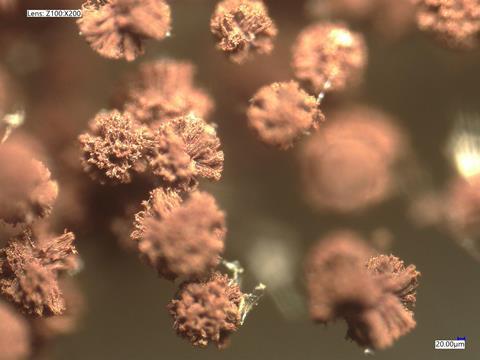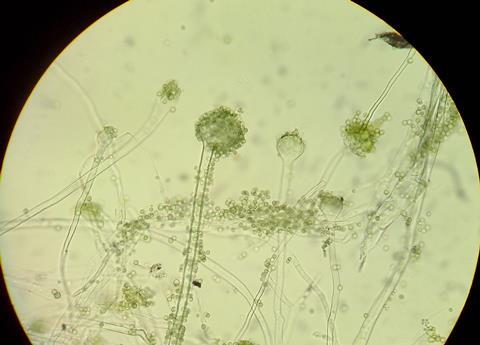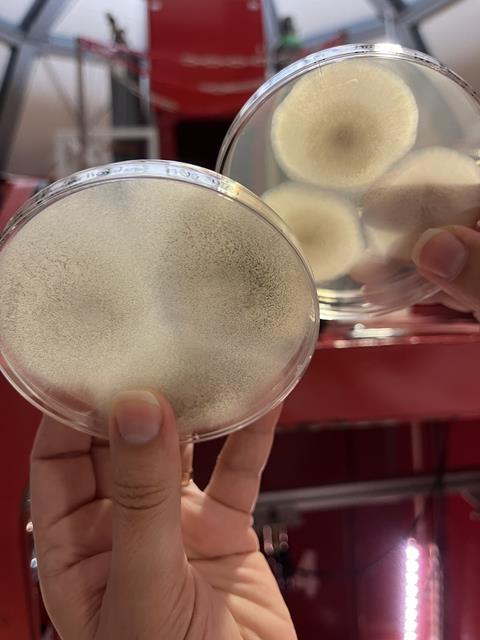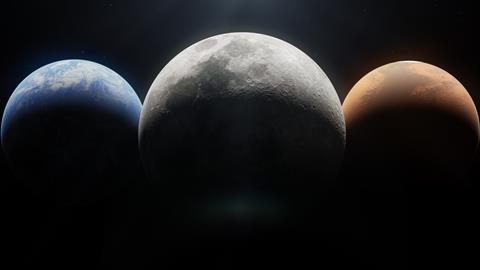In the near future, humanity will make significant strides in space exploration. There are plans to set up lunar bases within the next decade, and renewed interest in exploring crewed missions to Mars. Many countries and institutions are focusing on, and investing in the exploration of space. Space presents a multitude of challenges that require innovative solutions, namely the use of microbes. Some surprising allies for this journey are fungi. These are incredible organisms in terms of plasticity, resilience, and adaptation. However, they have the potential to both help and hinder us.
Terrestrial fungi and their relevance on our own planet
Fungi are an incredibly diverse group of organisms that play crucial roles in sustaining ecosystems on our planet as well as supporting several industrial activities. Their ability to decompose organic matter, form symbiotic relationships, and produce a wide range of bioactive compounds makes them indispensable to life on Earth. They are also key players in the model of a biocircular economy as they help to create sustainable systems that mimic natural cycles, where waste is minimized, and resources are reused. Fungal relevance in this context is due to their remarkable ability to break down complex organic materials into simpler compounds, which can then be reused, for example, by other organisms. This process not only recycles nutrients but also helps in reducing waste and mitigating environmental pollution.
Many species are currently used in highly relevant processes within this context. Phanerochaete chrysosporium, a white-rot fungus, is used to degrade lignin (a complex and recalcitrant component of wood), by breaking it down, facilitating the decomposition of wood and other plant materials, and releasing nutrients back into the soil. Furthermore, it effectively breaks down complex xenobiotics (chemical aromatic compounds that are foreign to biological systems) into basic substances like carbon dioxide (CO2) and water (H2O), helping to clean up pollutants and recycle nutrients in the environment. In another example, Aspergillus niger, one of the most explored species in industrial processes, is regularly used to produce enzymes (e.g. amylases and cellulases) that can break down starch and cellulose into simpler sugars and is thereby applied in various industries, from biofuel production, food processing, to waste management.

In agriculture, fungi are used in biocontrol to manage pests and diseases, reducing the need for chemical pesticides. Mycorrhizal fungi form symbiotic relationships with plant roots, enhancing nutrient uptake and improving soil health.
In the food and beverage industry, fungi are essential in the production of various foods and beverages and are also being explored as protein sources. Yeasts, a type of fungi, are used in baking, brewing, and winemaking. Saccharomyces cerevisiae, the baker’s yeast, is an example of a common yeast used in baking, brewing, and bioethanol production, which is also a model organism in scientific research. Filamentous fungi are also employed in the production of food products like cheese, soy sauce, and other fermented foods. One example of these is the species Aspergillus oryzae, used in the production of fermented foods like soy sauce and sake, and is also used to produce enzymes (e.g. amylases and proteases) for various industrial applications.
Many commonly used antibiotics such as penicillin are derived from fungi. Additionally, they produce a range of bioactive compounds with medicinal properties, including immunosuppressants, cholesterol-lowering drugs, and anticancer agents.
Fungi can also be used for environmental applications. They can degrade pollutants, including hydrocarbons, pesticides, and heavy metals, making them valuable for cleaning up contaminated environments. This process, known as mycoremediation, harnesses the natural metabolic pathways of fungi, detoxifying and restoring polluted sites. They are also increasingly being explored for their potential in producing sustainable materials. For example, fungal mycelium can be used to create biodegradable packaging, leather alternatives, and building materials. These innovations offer eco-friendly alternatives to traditional materials and contribute to reducing the environmental footprint of various industries. Fungi can also convert agricultural waste and other biomass into biofuels, providing a renewable energy source. This process not only helps in managing waste but also reduces reliance on fossil fuels.
The versatility and resilience of fungi make them incredibly important natural resources that can be harnessed to develop innovative solutions to some of the most pressing environmental and industrial challenges of our time.

Fungal relevance outside our planet
The majority of fungal applications can be directly transferable for space applications. Fungi have shown remarkable potential for many different purposes beyond Earth, making them highly relevant in the context of space biotechnology and astrobiology, particularly in the emerging field of Astromycology. Research has demonstrated that fungi can survive and even thrive in the harsh environments of space, providing valuable insights into the limits of life and the potential for life on others.
The helpful side of fungi for space exploration
Just like on Earth, fungi can be used to produce essential materials and supplies in space. They can help create biomaterials, medicines, and even food, reducing the need to transport these items from Earth – helping to reduce payloads and therefore mission costs. This capability is crucial for long-duration missions where resupply is limited. Fungi like Cryptococcus neoformans have shown remarkable resilience to high levels of radiation. This species produces melanin, which can absorb radiation and protect cells from damage. This property can be harnessed to develop protective coatings for spacecraft and habitats, shielding astronauts from harmful cosmic rays. Moreover, fungi can play a vital role in bioregenerative life support systems, helping to recycle waste, produce oxygen, and purify water, creating a sustainable environment for astronauts. This makes them an integral part of closed-loop life support systems needed for long-term space habitation.
Additionally, fungi can break down organic waste, recycle nutrients, and produce bioactive compounds, opening up possibilities for developing new pharmaceuticals to protect astronauts from space-related health risks.

Fungal factories in space
For now, fungal factories in space are just an exciting concept. However, these are becoming an increased probability. They would be highly useful and hold great potential for supporting long-term missions to destinations like Mars or the Moon. Fungi are well-suited for space environments, thrive under conditions like microgravity and hypergravity, and efficiently produce a wide range of useful products. They can adapt well to the unique conditions of space, such as radiation and limited resources.
The idea is to use fungi as cell factories to produce essential supplies like food, enzymes, and antibiotics, directly in space. Certain fungal species have shown increased production yields of certain products under space conditions, and some can even develop different production profiles, being able to produce different or better products when compared to terrestrial conditions. The use of this approach would reduce the need for frequent resupply missions from Earth, making space travel more sustainable and cost-effective. Additionally, space pharmaceuticals can exploit fungi to help combat antimicrobial resistance and develop new effective drugs, addressing urgent needs on Earth. This could be particularly beneficial in fighting new emerging infections greatly driven by climate change.
The harmful side of fungi
Fungi also have a negative side to them. One of the primary concerns is their ability to thrive in the confined and controlled environments of space structures. They can infiltrate these and grow on various surfaces, including windows, control panels, and air conditioning systems, causing significant structural damage. This was notably observed on the Russian space station Mir, where fungi damaged the station’s titanium-quartz windows. They can degrade materials used in spacecraft, space structures, and stations, such as insulation, wiring, and structural components, potentially leading to equipment failures and safety hazards.
Fungal contamination can also pose a serious direct threat to an astronaut’s health, particularly as space conditions are known to lead to reduced immune responses. Fungi can contaminate food, air, and water supplies, and their spores can cause respiratory issues and infections. Certain fungi also produce mycotoxins, which are toxic compounds that can compromise human health. Managing and mitigating these risks is essential to ensure the safety of crew members on long-duration missions.
The ability of fungi to form biofilms and resist conventional cleaning methods means that maintaining a sterile environment becomes increasingly difficult over time, which is an additional concern for long-duration missions. Persistent contaminations can affect not only the health of crew members but also the integrity of scientific experiments and the overall mission’s success. Understanding and mitigating the harmful effects of fungi in space, and assessing backward and forward contamination is crucial to ensure the safety and sustainability of future space exploration endeavours.
Fungi present both opportunities and challenges for space exploration. By understanding and harnessing their beneficial properties while mitigating their risks, we can address some of the critical challenges of space exploration, leveraging these remarkable organisms to support humanity’s quest to explore and inhabit locations beyond our own planet.








No comments yet